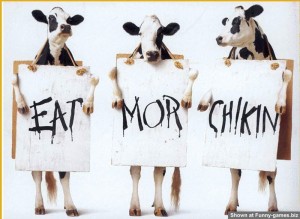 Have you seen the new HBO made-for-TV movie called “Temple Grandin?”
Have you seen the new HBO made-for-TV movie called “Temple Grandin?”
It’s a powerful story about a woman, Temple Grandin, who overcame autism to become one of the most influential figures in today’s livestock and animal husbandry industry. Not only is Temple’s story a testament to the ability of the human spirit to overcome tremendous obstacles, it teaches many principles that all business leaders would do well to embrace.
When diagnosed at a very early age, doctors said Grandin would never speak. When they recommended life-long institutionalization, Grandin’s mother refused to accept that possibility, and continually pushed her daughter to develop her abilities and learn to work around her autistic limitations.
With the support of her mother and several key mentors along the way, Grandin went on to graduate from college and earn a Ph.D. in animal science. More important, she revolutionized the livestock industry by designing innovative systems that improve herd management and facilitate more humane treatment of the animals we depend on for food. (Lesson #1: Don’t let others tell you what you can and can’t do!)
In North America, almost half of the cattle are handled in a center track restrainer system that Grandin designed for meat plants. Her innovative curved chute and race systems for cattle are used worldwide, and her writings on the flight zone and other principles of grazing animal behavior have helped many companies to reduce stress on their animals during handling. Grandin also developed an objective scoring system for assessing handling of cattle and pigs at meat plants that is currently used by many large corporations to improve animal welfare.
At first, livestock companies balked at implementing Grandin’s designs due to the high cost. But when they saw how much money they could save through lower manpower costs, fewer deaths and injuries to cattle, and more efficient slaughterhouse systems, implementing the designs became an easy choice. (Lesson #2: True innovation is always cost-effective.)
Here’s the most important lesson of all: Grandin was able to come up with her revolutionary designs because she saw the world differently than anyone else in the industry.
Because of her autism, Grandin could see patterns in livestock movement and behaviors that others couldn’t. She studied how the cattle responded to all the different aspects of the stockyard/slaughterhouse process. She listened to their mooing to determine how they communicated with each other. She got down on her hands and knees in the mud and the muck to see what the cattle saw as they moved through the chutes. In other words, she literally got inside the cows’ world to understand what the stockyard experience was like for them and how she could make it better. (Lesson #3: Get an understanding of your customers and other stakeholders as much as you possibly can.)
As with many real breakthroughs, people initially scoffed at her. Just an autistic woman with a tenuous grip on reality. Plus, the industry was dominated by men and their “good old boy†notions about how to process cattle. But once they began testing Grandin’s designs, they quickly realized how much more efficiently and humanely they moved cattle through the system.
Unless you suffer from autism, you probably don’t have Grandin’s innate ability to see the world differently. And I’m not suggesting you get down on your hands and knees and crawl around in the mud and the muck to make your business better. (Unless that’s part of your business process.) But the principles are the same.
Innovation involves looking at your world and the world of your customers in ways that no one else has seen before. It requires constantly questioning the way things have always been done in your industry. And it requires asking on a regular basis, “How can we do things cheaper, faster, better, or different in order to add more value to our market?”
If you haven’t seen the movie, I highly recommend it. Grandin found a way to turn her biggest liability into her greatest strength. And in her triumph, there are lessons for all of us who lead people and organizations. How can we learn to see our world, and the world of our customers, differently? And, how can we turn our own weaknesses into strengths?






